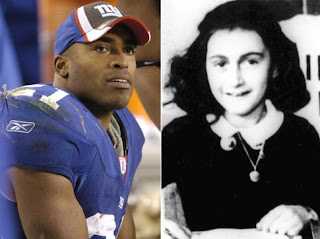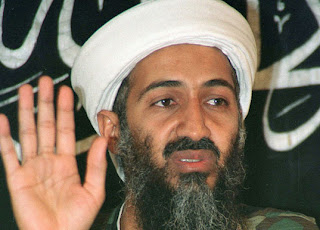JTA writer Ami Eden began his blog post about the showing of Quentin Tarantino’s “Inglourious Basterds” at the Jewish Theological Seminary as follows:
There are many wonderful things to say about the Jewish Theological Seminary, but let’s face it — it’s not exactly where all the hipsters meet. Honestly, how many times do you find yourself saying: I’m going to a really cool event at JTS tonight.
Important. Interesting. I’ll even give you provocative (sometimes). But, cool?
Well, to be fair, I guess I also wouldn’t characterize JTS as the hippest place in Manhattan. Sure, the six years I spent there in rabbinical school were some of the best and most exciting years of my life, but “cool” programs were not the Seminary’s forte. Recently, times have been tough on JTS with harsh financial woes, budget cuts, and the downsizing of its faculty and staff. They have even decided to close the Seminary on Fridays to save money. I do give Arnie Eisen, the new chancellor, a lot of credit for trying to turn things around and improve the image of JTS. Although, some might do a double-take at the recent programs the Seminary has hosted.
First, there was the event a couple months ago hosted by Sports Illustrated Swimsuit Model Esti Ginzburg, and sponsored by Birthright NEXT and the Council of Young Jewish Presidents. The party for young Jewish New Yorkers was described as “an evening of fashion and passion.” However, having JTS (the academic center of Conservative Judaism) sponsor a party hosted by a bikini model didn’t sit well with many of my female rabbinic colleagues.
Rabbi Joanna Samuels wrote in the Forward, “An institution that trains clergy should probably stay away from events fronted by swimsuit models. People who learn, teach, and advocate for the highest values of our tradition are not going to increase Judaism’s appeal – or their own – through forcing an association with low-brow celebrity culture. The religious leaders who chase after celebrities in the name of kiruv -lo and behold! -often turn out to be using their Torah-for-the-masses public face as a screen for their own narcissism or social climbing.”
Well, I’m not sure the event demanded that level of criticism, but I too found it odd that JTS would host such an event. Hopefully, it achieved its mission of getting hundreds of professional, active, vibrant, young Jews to a party in which they could network (network, by the way, means date and then get married whereby they will produce Jewish offspring to repopulate the Jewish community).
The next event the Seminary produced could also be described as cool and controversial, although in a different way. When I received an e-mail publicizing the screening of Quentin Tarantino’s film Inglourious Basterds, I immediately recognized it as the Seminary trying something new and different. When I read that Tarantino himself would attend the event, I booked a flight to NYC. I didn’t want to pass up a chance to watch a Tarantino film with Tarantino. I’ve been a big fan of the filmmaker’s for years, and Pulp Fiction, Reservoir Dogs, and the Kill Bill movies are among my favorites.
So, how does a Jewish academic institution like JTS come to host a screening and panel discussion of this violent, controversial, and profanity-laden film? Here’s the story:
Rabbi Jack Moline, a Conservative rabbi in Alexandria, Virginia did what many rabbis (myself included) did on Yom Kippur this past Fall. He delivered a sermon based on the Holocaust film everyone was talking about — Inglourious Basterds. Moline tells his congregation that this is, in some twisted way, a feel good Holocaust movie for us Jews. He explains that it is cathartic to view the film, in which the Nazis die horrific deaths, as a revenge fantasy. His sentiments were not much different than the sentiments of many rabbis, including Rabbi Irwin Kula. In his articulate review of the film on the Huffington Post, Kula concluded, “Thank you, Quentin Tarantino. You have reminded us, whether you intended to or not, that we are never as powerful as our greatest fantasies and never as powerless as our worst nightmares.”
So, Jack Moline’s sermon makes its way to Lawrence Bender, the producer of the film. Bender also reads Irwin Kula’s review on the Web. He reports about both of them to Quentin Tarantino, who is interested in what rabbis think about the film. Rabbi Marc Wolf, vice-chancellor of JTS, suggests to Chancellor Arnie Eisen that the Seminary show the film and host a panel discussion including Lawrence Bender. Some calls were made, some Jewish connections to Hollywood utilized, and that’s how a Hollywood producer came to find his way to 3080 Broadway to sit on a panel moderated by the Seminary’s chancellor, and including Rabbi Jack Moline and Rabbi Amy Kalmanofsky (a biblical scholar and self-proclaimed lover of gory films).
Following the 2 1/2 hour film, shown in Feinberg Auditorium on a large, rented HD screen with dynamic stereo sound, Bender announced to the dismay of the audience that Mr. Tarantino would not be attending due to a sore throat. While I was certainly disappointed that I traveled to NYC to see and hear Tarantino, the panel discussion (titled: “Jewish Persecution and the Fantasy of Revenge”) was very interesting nevertheless. It began with Chancellor Eisen reading from Irwin Kula’s impressions of the film (the crowd was obviously taken aback when Eisen didn’t censor himself in reading Kula’s words which included a profanity or two). Kalmanofsky then gave an exciting perspective on why she loved the film so much and had no problem with the violence or the revenge cast upon the Nazis. Moline said much of what he had spoken in his Kol Nidrei address, and explained that he returned to the pulpit the next morning on Yom Kippur day to give a different take on Holocaust memory and the respect deserved by the victims. All agreed that after so many Holocaust films had been produced, this one offers a much different take. And one that was a breath of fresh air.
Lawrence Bender spoke about traveling to Israel and Munich with Tarantino to show the film to audiences there. Everyone laughed when he recounted the story of his sitting down to lunch with the actor who played Hitler. The actor was in full makeup and sat alone during the lunch break. Bender recalled that he sort of felt badly for the guy and joined him. Perhaps, the highlight of the panel discussion was Lawrence Bender’s own father, who sat in the audience behind me and kept offering his own assessment of the film’s message (see video clip below).
All in all, it was a much different JTS-sponsored program than I remember attending as a student at the Seminary. Things have certainly changed at JTS and I’m glad the administration is trying new things. Chatting with Marc Wolf earlier that day, he dropped a hint about what could be his next big production at JTS when he asked if I’d seen the Coen Brother’s new film “A Serious Man.” “Wouldn’t it be interesting to hear them talk about that film here?” he asked.
Here’s a video clip of Lawrence Bender and Arnie Eisen talking about Inglourious Basterds:
(c) Rabbi Jason Miller | http://blog.rabbijason.com | Twitter: @RabbiJason | facebook.com/rabbijasonmiller







